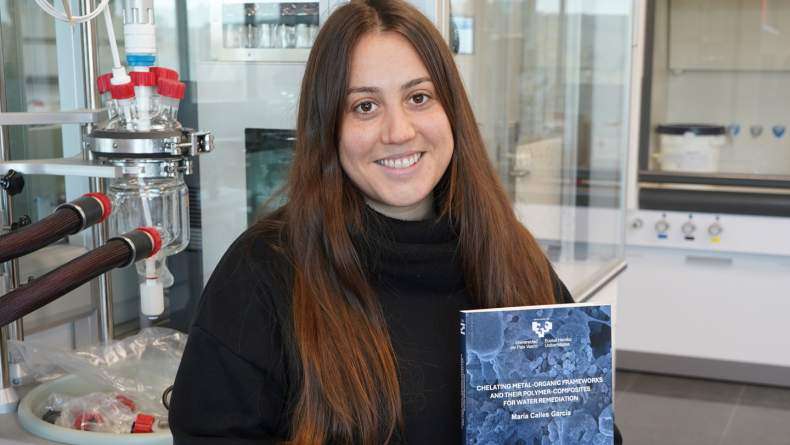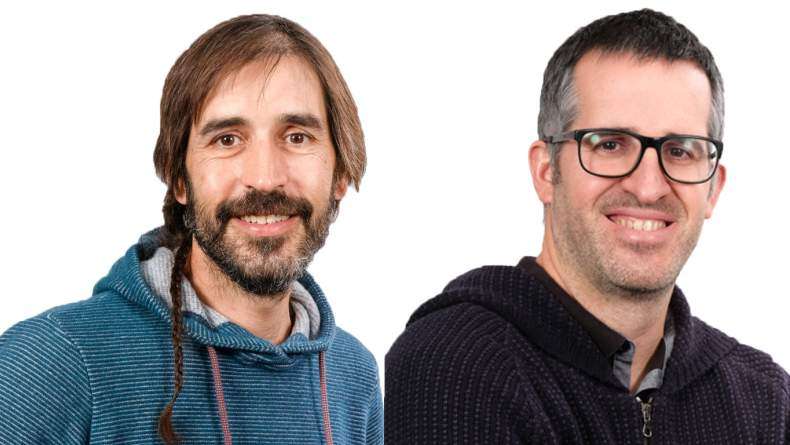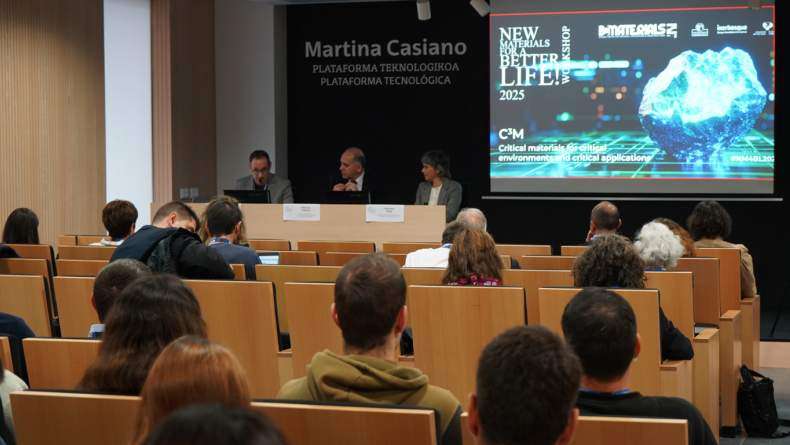BCMaterials Fortnightly Seminar #46

MIKEL MÚGICA
(BCMaterials)
ANALYSIS OF THE FATIGUE CYCLING ON ELASTOMERIC POLYMER WITH FERROMAGNETIC PARTICLES COMPOSITES FOR DAMPING APPLICATIONS
The aim of this project is to determine the life cycle of a composite made up of a polymer matix and Ni-Mn-Ga spherical particles as the filler. NI-Mn-Ga is a Ferromagnetic Shape Memory Alloy (FSMA) that can dissipate large quantities of mechanical energy through the recoverable motion of twin boundaries. The work performed for this tesis starts with the sample manufacturing, which is done under a magnetic field to orient the particles in the composite. The samples were the characterized by thermal and magnetic analysis of the obtained composite as well as through microscopy. The information obtained from the specific instrumentation is analyzed to determine the initial properties of the Ni-Mn-Ga/PU composite. By applying a cyclic stress with the Dynamic Mechanical Analysis (DMA) and later analysis of the composite following the same procedure as for the original samples, the intention is to determine and understand the mechanisms resposible for the fatigue of the composite. Once the composite sampleshave been analyzed before and after DMA, the results are contrasted, extracting as the main conclusion that the failure of the composites is the formation of cracks in the polymeric matrix, occuring earlier if the cyclic stress is applied perpendicularly to the preferential direction of the composite than if it is applied parallell.MARI PAZ CRESPO
(BCMaterials)
APPLICATIONS OF SHAPE MEMORY POLYMERS TO SELF-HEALING SURFACES
Shape memory effect of a commercial polyolefin, polycyclooctene (PCO), crosslinked in several ways has been studied. First, PCO has been crosslinked using a monofunctional peroxide, dicumyl peroxide, or irradiated with γ-rays. Moreover, two different ionomers (Surlyn 1705 and Surlyn 8940), PCO and ionomers blends and, finally PCO and ionomers blends crosslinked with dicumyl peroxide were also studied. All samples were prepared by compression moulding and then, thermal and mechanical properties were analysed by Differential Scanning Calorimetry (DSC), Thermogravimetric Analysis (TGA) and Dynamic Mechanical Thermal Analysis (DMTA). Shape memory effect was studied by Thermo-mechanical Analysis (TMA). Finally, self-healing properties have been studied marking the sheet surfaces with a hardness test pencil in lines and holes. Scratches depths and diameters have been measured by different techniques as profilometry, confocal and optical microscopy. To conclude the project, the thermal-induced self-repair behaviour was followed in situ by optical microscopy. The aim of this project is to obtain shape memory polymers with self-healing properties to appliance applications.
Related news
María Calles, New Doctor of BCMaterials
We would like to congratulate María Calles García for obtaining her PhDs in Materials Science and Technology from the UPV/EHU. On December 4 made a brilliant defense of her thesis titled ‘Chelating…Invited Talk with Barcelona Microelectronics Institute’s researchers (December 3)
On December 3 at 12:00 PM, in the Martina Casiano Auditorium in Leioa, BCMaterials will host senior researchers Antón Guimerà and Xavier Illa from the Barcelona Microelectronics Institute (IMB-CNM,…Invited Talk by Liu Yao on Lithium-Metal Batteries (December 2)
Next Monday, December 2, Liu Yao, professor at the Shanghai Institute of Applied Physics, will give an invited lecture at BCMaterials entitled ‘Li-Metal Batteries: From Liquid to Solid-State’. The…Success of BCMaterials’ Annual Workshop on Critical Materials
The 2025 edition of BCMaterials’ annual workshop gathered nearly one hundred participants on November 19 in Leioa to review the latest advances and discuss critical materials, their applications, and…



